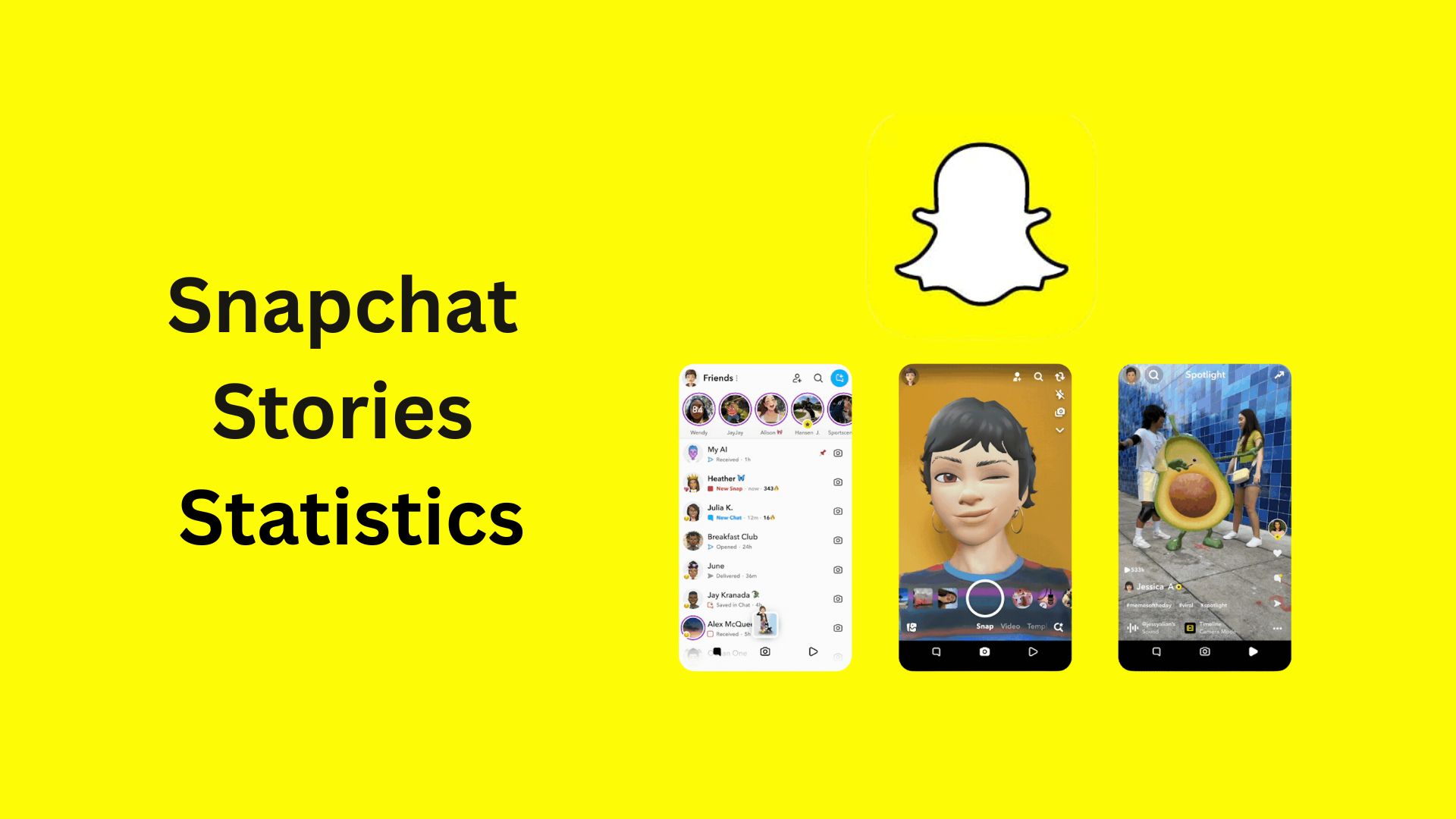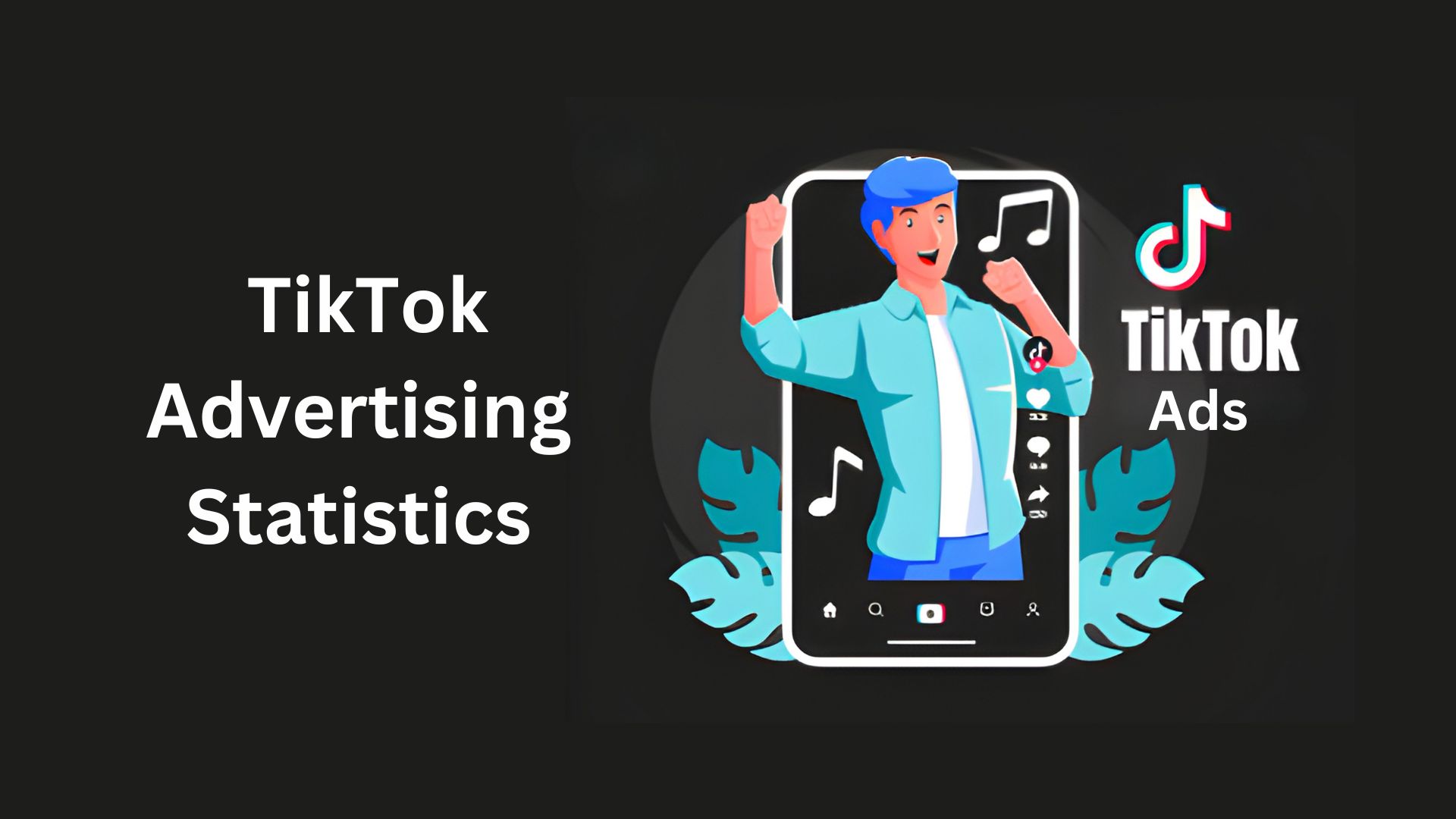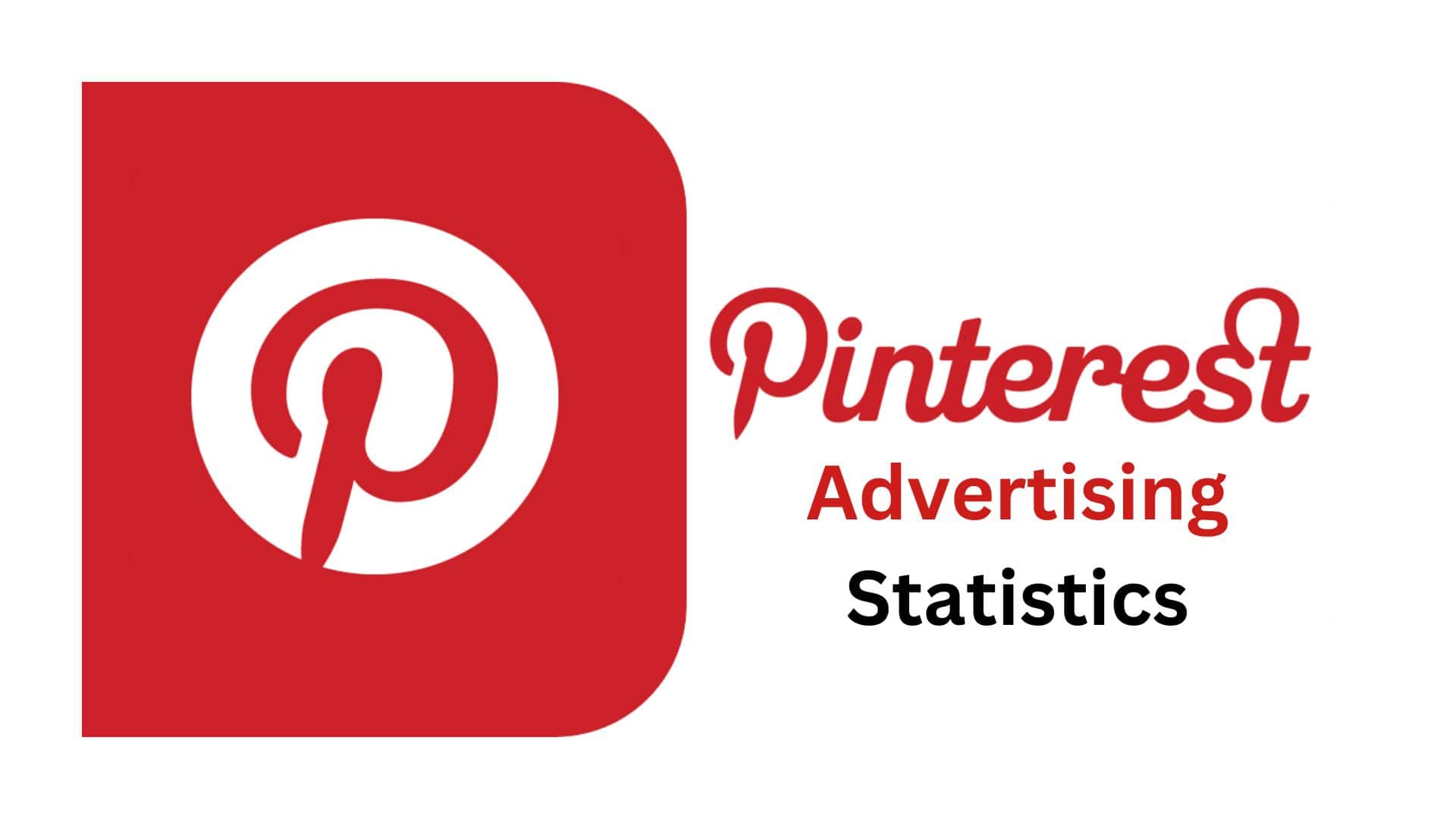Extended Reality Statistics By Market Size, Countries and Technology Trends (2025)
Updated · Nov 03, 2025

Table of Contents
- Introduction
- Editor’s Choice
- Extended Reality Market Size
- Extended Reality In Education
- Use of Extended Reality In Higher Education
- AR And VR Market By Segment
- Extended Reality Vision By Countries
- Application of XR In The Healthcare Sector
- Retail And E-commerce Extended Reality Statistics
- Extended Reality Technology Trends
- Extended Reality: Recent developments
- Conclusion
Introduction
Extended Reality Statistics: Extended Reality (XR) — which is the overarching term for augmented reality (AR), virtual reality (VR), and mixed reality (MR) — is not only a toy for gamers anymore; it is a business tool, a training room, and a shopping assistant.
The year 2025 is like an XR without a noise: it draws lots of money, lots of pilots, mixed user growth numbers, and the big bets from the largest tech companies. This article will show the latest extended reality statistics.
Editor’s Choice
- The global XR market expanded dramatically, from US$37.billion in 2022 to US$49.6 billion in 2023, and it is expected to reach US$519.5 billion by 2032 with a CAGR of 30.8% (2024–2033).
- The North American region accounts for 40% of the XR market and is projected to have a CAGR of 32.2% (2022–2032); 5G penetration is expected to be over 90% by 2028.
- In 2023, 78% of educational institutions incorporated XR, rising from 54% in 2019; among these, 55% are using XR to a certain extent or more, with 67% in higher education and 46% in further education.
- For the video game XR segment, revenue was US$7 billion in 2020 and US$11.5 billion by 2025, while the AR market was estimated at US$6 billion in 2018 and is expected to reach US$200 billion by 2025.
- Only half of the surveyed individuals in 29 countries (2022) expressed a favourable opinion toward using XR devices.
- Independent vertebral surgeries were performed by 83% of VR-trained participants, while the figure was 0% in the case of traditional training.
- AR in healthcare will grow to US$10 billion while VR will grow to US$1.2 billion by 2024; 68% of XR professionals regard training simulations as a key healthcare application.
- By 2024, there will be 1.73 billion mobile users expected to be using AR.
- 70% of consumers are aware of the advantages of AR, while 57% prefer to buy from the brands that support AR.
Extended Reality Market Size
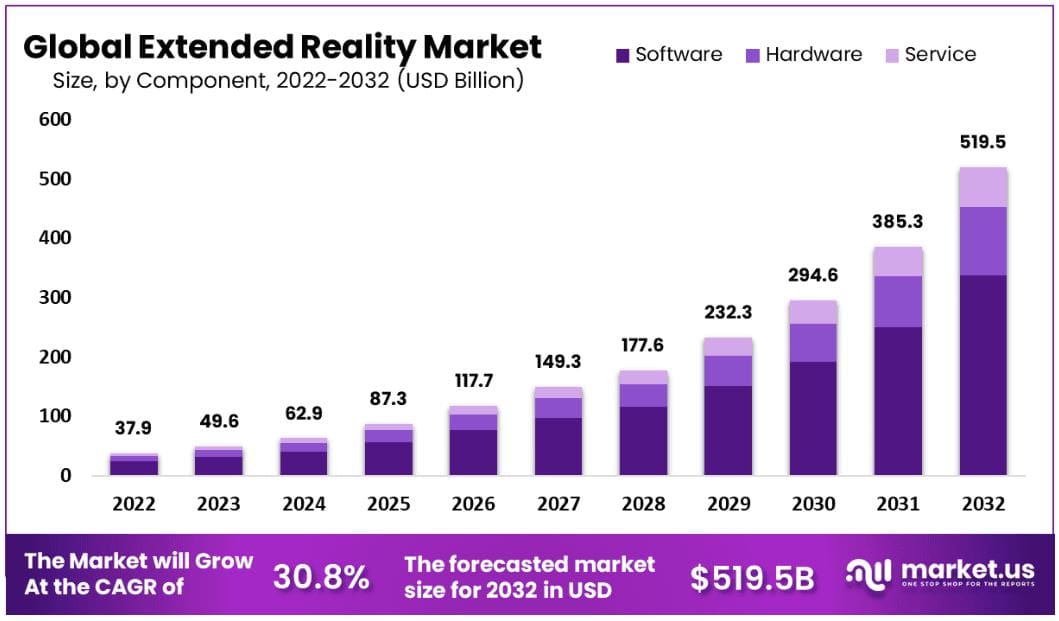
(Source: market.us)
- As per Market.us, the global Extended Reality (XR) market is growing at a rapid pace and showing strong potential for the future.
- According to industry analysis, the Global Extended Reality (XR) Market is expected to reach USD 519.5 billion by 2032, growing from USD 49.6 billion in 2023 at a compound annual growth rate of 30.8% between 2024 and 2033.
- In 2022, Meta held an estimated 80% share in the consumer Virtual Reality (VR) market, primarily due to the strong sales of Meta Quest headsets.
- The company’s leadership in the XR space is supported by its investment of over USD 10 billion in Reality Labs during 2021–2022, showing its intent to expand the AR/VR ecosystem.
- Sony maintained its strength in tethered VR systems through its PlayStation VR, accounting for 35% share in 2022, supported by its large PlayStation user base.
- The development of Sony’s next-generation PS VR, expected for launch in 2023, demonstrates its focus on enhancing immersive gaming experiences.
- The total investment in XR technologies reached around USD 16 billion in 2022, reflecting strong confidence from investors and global tech companies.
- Projections suggest investments could increase to between USD 20 and USD 22 billion in 2023, depending on Apple’s entry into the market and sustained commitments by companies like Meta and Microsoft.
- The market’s growth is largely driven by expanding use of AR/VR gaming technologies and continuous hardware and software improvements that create more realistic user experiences.
- The software component accounted for 65% share of the market in 2022, emerging as the leading segment due to demand for advanced XR platforms and applications.
- Within technology types, Augmented Reality (AR) led the market with a 55% share in 2022, as it gained adoption across industries including retail, healthcare, and manufacturing.
- Gaming represented the largest end-user segment, capturing a 45% revenue share, as demand for immersive and interactive content continued to grow.
- Growth opportunities are expanding in multiple sectors such as education, healthcare, and retail, driven by the development of lighter devices and improved display technologies.
- Integration of AI, 5G, and blockchain technologies is a major trend shaping the next generation of XR solutions, enabling more interactive and secure virtual environments.
- XR applications in healthcare are increasing, particularly in therapy and mental health treatments, where immersive experiences are proving effective for patient engagement.
- The region is forecast to record a 32.2% CAGR, driven by continued adoption of XR in enterprise and consumer applications.
- Leading companies include Microsoft, Google, Apple, Samsung, HTC, Sony, Qualcomm, Magic Leap, and Unity Technologies, which are actively investing in research and development to enhance XR platforms.
- In recent updates, HTC launched the VIVE XR Elite, a hybrid MR/VR headset, expanding its product range for both consumers and professionals.
- Samsung introduced Dreamground, an augmented reality experience designed to encourage creativity and exploration among users.
- These developments reflect how global technology leaders are advancing XR integration into daily life and professional settings.
- The rapid pace of innovation and rising adoption across industries are expected to make XR one of the most transformative technology markets of the decade.
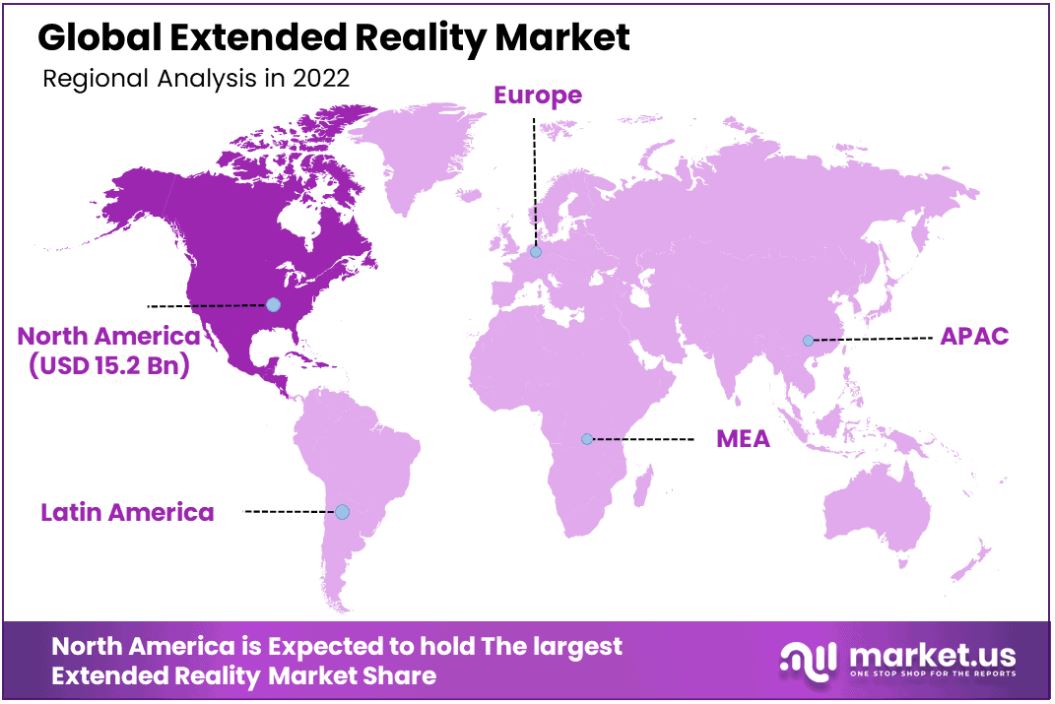
(Source: scoop.market.us)
- North America is expected to remain the dominant region in the global extended reality (XR) market, holding the largest share of around 40%.
- The region is projected to grow at an impressive 32.2% compound annual growth rate (CAGR) from 2022 to 2032.
- This strong position is mainly due to the widespread use of smartphones, which serve as one of the key platforms for augmented and virtual reality applications.
- The increasing adoption of smart devices, along with the rapid rollout of 5G networks, is significantly boosting XR experiences by providing faster connections and lower latency.
- Based on a report from LM Ericsson, the region is anticipated to have a 5G adoption rate of more than 90% by 2028, thus making immersive technologies highly available and efficient. With such top-notch connectivity and digital proficiency, North America is still the leader in XR innovation and its worldwide adoption.
Extended Reality In Education
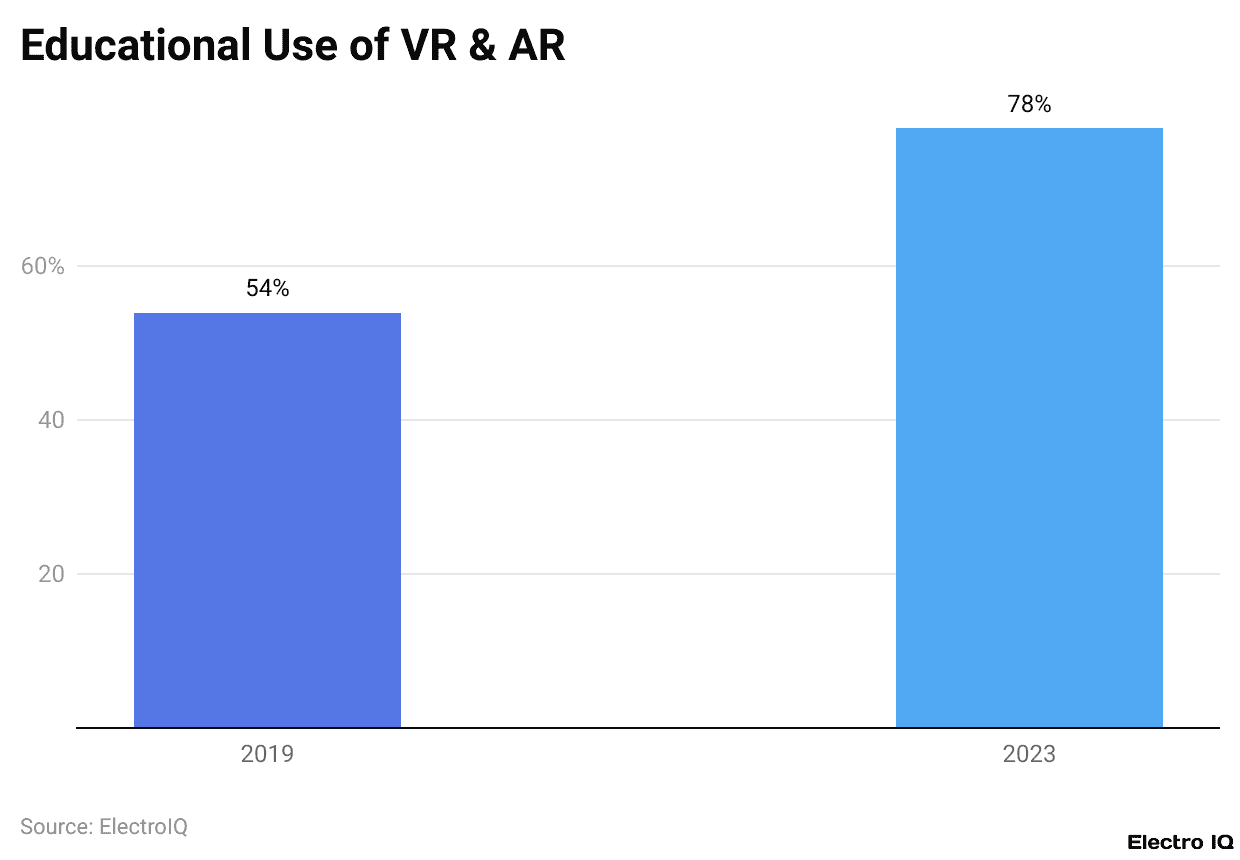
(Reference: cloudwards.net)
- The implementation of Virtual Reality (VR) and Augmented Reality (AR) in the learning process has been rapidly increasing.
- A recent survey in 2023 found that approximately 78% of those surveyed believed that their schools or educational organisations had already started using some sort of XR (extended reality) technology.
- This represents a huge jump in the user rate from 54% in 2019, which indicates the rapid spread of immersive tools into educational institutions.
- The increase in the utilisation of XR indicates that the teachers are gradually but surely acknowledging its capacity for elevating the learning process.
- The immersion in VR and AR makes it possible for students to participate in lessons more dynamically – such as by discovering 3D representations, performing virtual lab experiments, or even taking a digital tour to ancient times.
- Besides that, the technology comes in handy when teaching difficult concepts by the use of very vivid and realistic representations in kids’ understanding through simple examples.
Use of Extended Reality In Higher Education
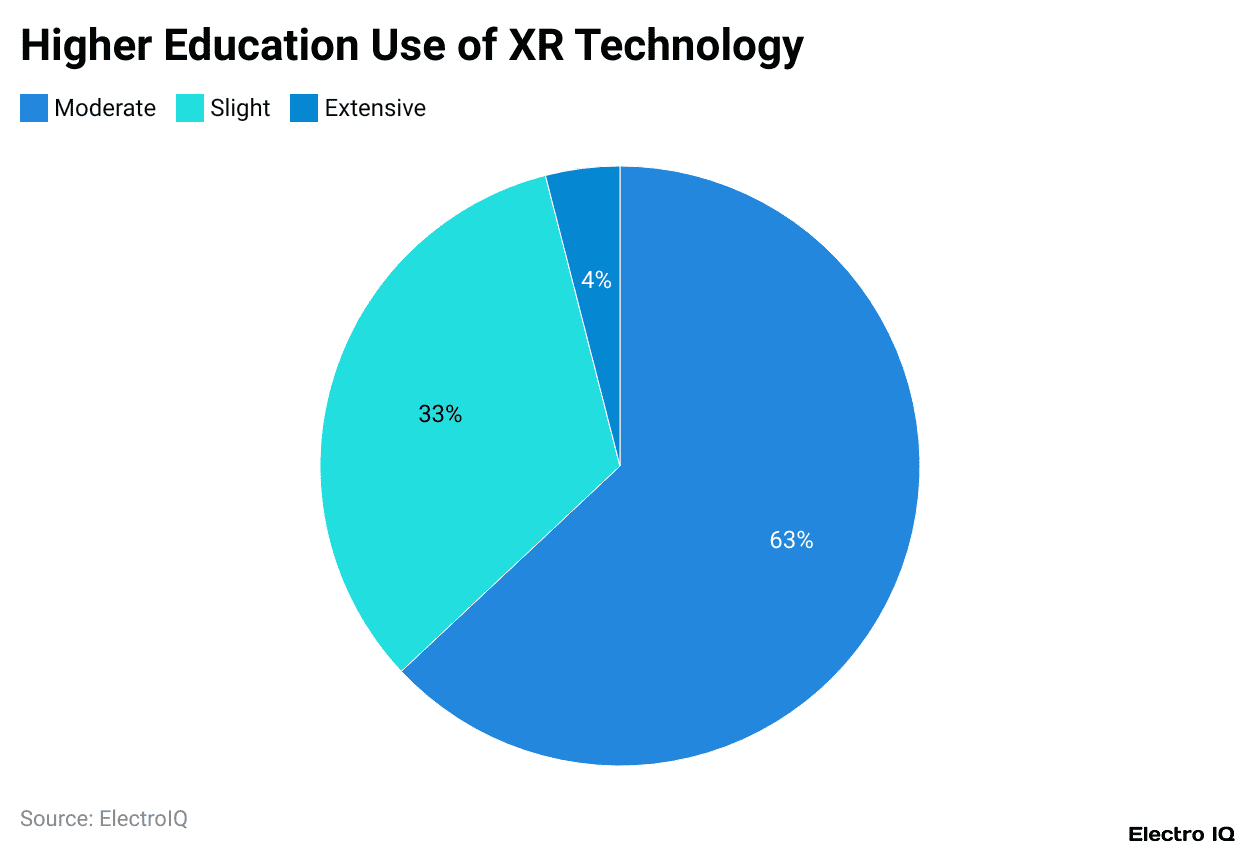
(Reference: cloudwards.net)
- Among the educational institutions that have integrated extended reality (XR) technologies in their curricula, the majority of them are still using them at a low level.
- More precisely, 55% of these institutions stated that they are using the XR tools in their teaching and learning environments, from the very moderate all the way to the extensive level.
- When examining the situation in detail, the adoption in higher education institutions was more pronounced, as 67% of them reported moderate to extensive use.
- On the other hand, further education institutions like vocational or community colleges had a lesser percentage, with only 46% stating that they are using XR tools in their teaching and learning environments, from the very moderate all the way to the extensive level.
AR And VR Market By Segment
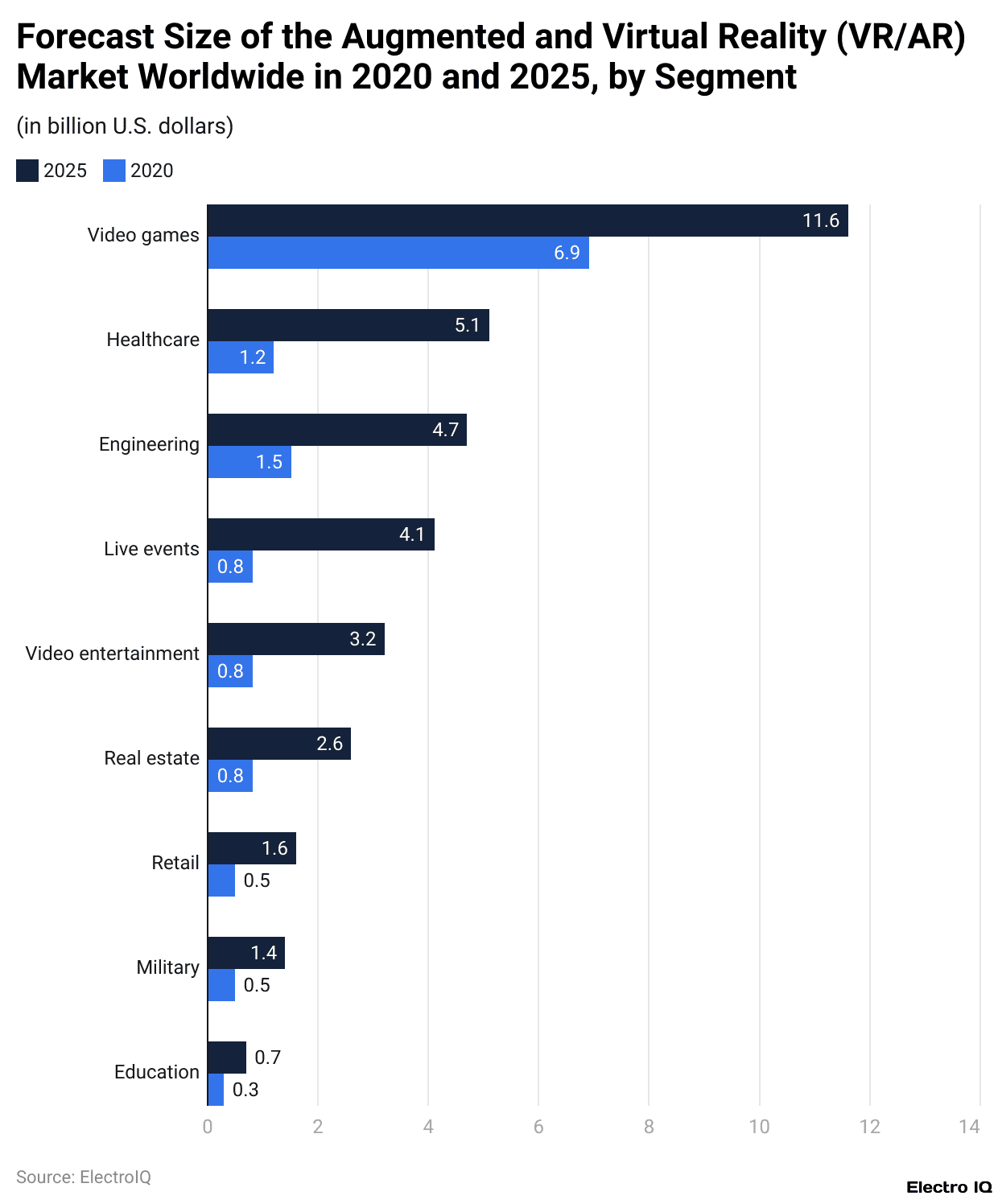
(Reference: statista.com)
- Predictions were suggesting that the video game industry would take over as the largest segment in the virtual and augmented reality market by 2020.
- The revenues from video games were anticipated to reach almost US$7 billion by the end of 2020 and then further increase to US$11.5 billion in 2025.
- Apart from gaming, industries like healthcare and engineering were also expected to grow strongly, indicating that immersive technologies can find application in various areas, not just in entertainment.
- AR and VR are frequently mentioned together because of their close connection; however, each of them has its own focus.
- AR focuses on the enhancement of the real-world environment by showing people digital information or visuals instead of completely immersing them in a virtual space.
- The AR market, in particular, was predicted to witness a very rapid growth with revenues expected to increase from around US$6 billion in 2018 to almost US$200 billion by 2025, thus pointing to the fast-growing demand for AR-based tools and experiences in the retail, education, and business sectors, among others.
- Tech leaders, including Sony, Facebook (now Meta), and Microsoft, not only realised VR’s potential but also developed their own products swiftly to grab a share of the pioneering market.
- Sony managed to become a major player in the VR headset market by unveiling its PlayStation VR, which was a commercial success.
- The initial thrust of this momentum indicated that the use of VR for entertainment, training, and interactive experiences was being accepted more widely.
Extended Reality Vision By Countries
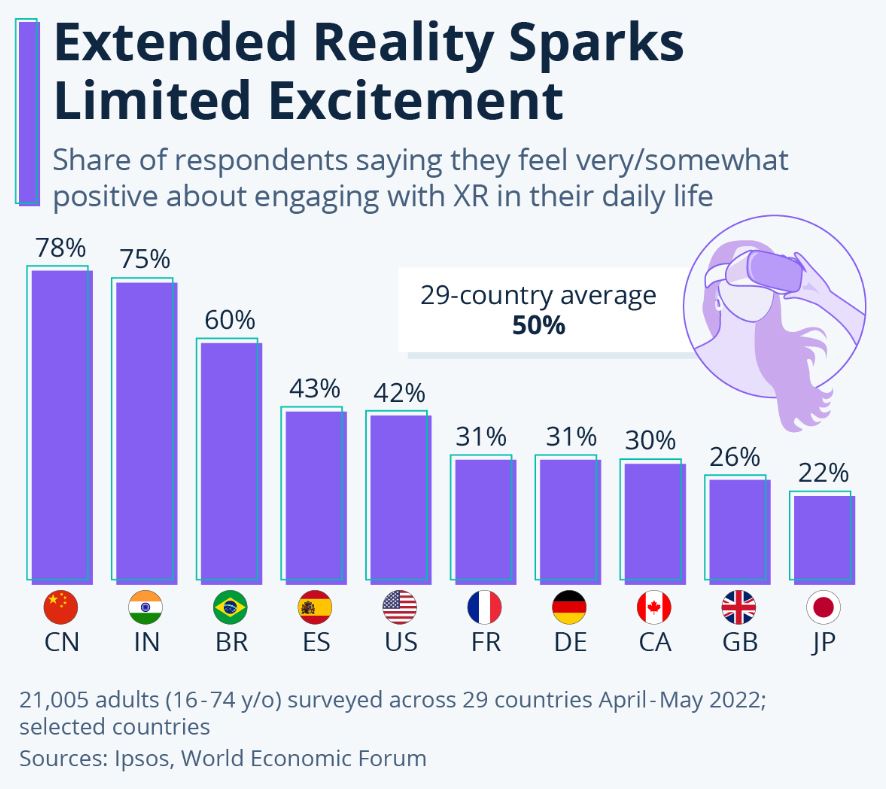
(Source: statista.com)
- Virtual, augmented, mixed, or extended reality has always been a technology with great potential, but has failed to deliver as well as expected.
- The heavy headsets were never fully adopted by regular users, and besides the gaming industry, there weren’t many areas where people could find the devices to be useful.
- This situation began to change with Apple’s announcement of the Vision Pro headset, which has stirred up the interest and excitement the XR market needed.
- Apple is betting big on what it labels as “spatial computing”, expecting it to be the next big thing in technology after the current generation.
- An Ipsos survey conducted in April and May 2022 in 29 countries with a total of 21,005 respondents found that only half of the people expressed very or somewhat positive feelings about using virtual, augmented, or extended reality devices in their everyday lives.
- The situation was even worse in many developed countries in Europe and North America.
- Such data reveal that Apple has a hard time ahead trying to sell the idea of XR to the public.
- But if history is any teacher, Apple might get it right—after all, it turned AirPods, which were ridiculed initially, into one of the most wanted tech accessories.
Application of XR In The Healthcare Sector
- The application of XR technologies (extended reality) in the health sector is on an upward trajectory and is pretty much revolutionising the way medical practitioners acquire knowledge, the way they treat, and the way they care for patients.
- The global digital health market is projected to surpass US$430 billion by 2028, indicating the increasing importance of digital tools in the provision of modern medical services, and XR being one of the latter.
- One Imperial College London study conducted on virtual reality (VR) for medical training brought forth impressive statistics.
- 83% of the VR-trained participants performed spinal surgery independently with little supervision; a feat that the ones trained via the traditional method could not achieve at all (0% success).
- The results underscore that immersive learning can considerably enhance the performance and the trust of the medical practitioners in the procedural skills of a high degree of risk.
- On top of that, the VR therapy for chronic pain has been proven to be beneficial and has even been granted FDA approval in 2021 for this purpose.
- At the same time, health-related digital resources are being increasingly blended into the daily routines of the population.
- The year 2021 saw about 72% of internet users looking for health-related information online, which is indicative of how technology has now become a major player in the process of healthcare decision-making.
- The XR professionals also point out a vast realm of possibilities with the immersive technologies in the medical sector.
- A survey carried out in 2020 revealed that 68% of XR professionals anticipate that training simulations will take up the largest portion of XR applications in healthcare in the luster of years to come.
- Money projections also back this prediction; the AR healthcare market is expected to rake in a whopping US$10 billion in revenue, while the VR healthcare market is projected to grow up to US$1.2 billion by 2024.
Retail And E-commerce Extended Reality Statistics
- One of the main reasons AR is expected to be widely adopted in 2024 is its easy integration into mobile devices and the fact that 1.73 billion mobile users are expected to make use of the technology.
- The impact of Augmented Reality on shopping was felt so positively that the majority of consumers, about 70% considered it a tool that could actually bring some advantages.
- 57% were more inclined to purchase from those brands that have AR in their shopping experience.
- There is a huge difference in engagement between online shopping with AR and shopping without it(AR).
- eCommerce experiences that are powered by AR are found to be increasing the user’s engagement by 200% as they are two times more engaging than those that do not have AR.
- Nevertheless, out of these clear benefits, only 15% of the online retailers have so far added AR functionality in their stores; this is still an indication of the potential for growth and development of this area.
- According to a survey conducted by Google, two-thirds of customers would like to have AR assist them in shopping, and when it comes to buying clothes, they would like to try them on virtually or when it comes to buying furniture, they would like to see how it looks in their house.
- A study done by Facebook’s AR partner, Vertebrae, during the COVID-19 pandemic showed that retail stores that used AR gained 19% in customer engagement.
- Even more surprisingly, customers who interacted with AR content were 90% more likely to buy the product than those who did not.
- On the Shopify platform, VR or AR content in product listings resulted in a 94% higher conversion rate compared to regular listings without these features.
- A survey conducted by Deloitte also reported that 40% of customers would not mind paying more for a product if the AR technology allows them to test or experience it before buying.
Extended Reality Technology Trends
- The XR market keeps on developing at a fast pace, with Sony, Oculus, and HTC at the forefront in the VR devices area.
- Microsoft, Vuzix, and Magic Leap are the ones dealing with the AR headsets and glasses.
- At the same time, Qualcomm and LG are the ones gaining the most XR patents, while initiatives like the Global XR Content Telco Alliance are collaborating to create 5G-based AR/VR content.
- The USA takes the lead with 841 XR patents, followed by Japan with 687, which is a strong sign of innovation.
- Besides, it is expected that more than 23 million jobs worldwide will be affected by XR technologies in 2023, an increase from 800,000 in 2019.
Extended Reality: Recent developments
- Meta has acquired BigBox VR for US$500 million, Qualcomm has purchased Augmented Pixels for US$250 million, and the launch of new products such as Apple Vision and HoloLens 3 has been a major development in the XR industry.
- Major funding rounds have been registered for Magic Leap (US$500M) and Niantic (US$300M).
- The combination of AI, 5G-enabled XR devices, haptics, and spatial computing has made the XR properties more realistic and engaging.
- The XR market is expected to increase by 28% CAGR from 2023 to 2028, giving rise to the usage in gaming, healthcare, education, and retail.
Conclusion
Extended Reality Statistics: Extended Reality (XR) has gone through a process of becoming an indispensable technology for gaming to transform the education, healthcare, retail, and enterprise training industries. The rapid advancement in Augmented Reality, Virtual Reality, and Mixed Reality, fostered by 5G, AI, and spatial computing, is making immersive experiences and practical applications even better. The XR is not only improving surgical training outcomes but also engaging e-commerce customers, thereby redefining interaction and learning.
Although there is a mixed public perception about it, the technological developments, along with big investments, have pointed towards the fact that XR is going to continue its fast and steady growth in the mainstream and will be the one to determine the future of work and daily life.
Sources
FAQ.
This global XR market, which was worth US$37.9 billion at the end of 2022, has increased to US$49.6 billion at the end of 2023 and is expected to be worth US$519.5 billion by 2032, showing a growth rate of 30.8% per annum from 2024 to 2033.
North America has the XR market share of 40% and thus is leading the area, with smartphone usage being the major factor, along with rapid 5G network development. The region’s rapid growth is expected to continue at a CAGR of 32.2% through 2032, and the 5G network will cover a population of over 90% by the end of 2028.
The percentage of educational institutions that embraced XR technology in 2023 was 78%, compared to only 54% in 2019. The higher education sector indicates a bigger share of users (67%) compared to vocational or community colleges (46%). XR technology brings the next level of learning with interactive 3D models, virtual experiments, and realistic simulations to remote learning.
The combination of XR and VR in the medical training sector is very effective since 83% of the participants trained with VR for spinal surgery perform that operation independently, while the rate for traditional methods is 0%. By 2024, the AR and VR healthcare markets are expected to be US$10 billion and US$1.2 billion, respectively, as training simulations, therapy, and patient care are the main reasons for this support.
It has been estimated that there will be 1.73 billion mobile users using AR by 2024. Shopping with AR increases interaction and has the potential for conversion increase of up to 94%. Approximately 70% of consumers are able to identify the benefits of AR, of which 57% are more likely to choose the brands which offer an AR-enabled experience, and 40% are willing to pay a higher price after trying the product virtually.

I hold an MBA in Finance and Marketing, bringing a unique blend of business acumen and creative communication skills. With experience as a content in crafting statistical and research-backed content across multiple domains, including education, technology, product reviews, and company website analytics, I specialize in producing engaging, informative, and SEO-optimized content tailored to diverse audiences. My work bridges technical accuracy with compelling storytelling, helping brands educate, inform, and connect with their target markets.

